-
1Birth a Noodle Spawnling
To make a spawnling:
- For the parts: you will need to print the .stl files I have provided on my Git/noodleSpawnling. There are two print beds already laid out will all the required duplicate parts as .thing files for your use!
- For the electronics: you will need a coin cell powered Marshmallow PCB OR the willingness to produce your own blinking implement.
- You will also need a set of small 8mm magnets OR (1) 6mm long M3 cap head screw with (1) M3 nut (hardware instructions and .stl files coming soon!).
THE MARSHMALLOW
On Nov 30th, the Marshmallow board was born. It is 26mm in diameter and can randomly blink two red LEDs, as well as pulse a tiny piezo buzzer at different keys. That is all it do. This is the magic sauce that will breathe life into your empty baby noodle shell and grant it a beeping soul. It will also upgrade your Noodle to near-robot status...
![]()
The little morsel comes with a coin cell battery holder, and snaps into the printed head assembly. So with little effort, you suddenly have the tiniest little functioning Noodle-Noggin conceivable:
![]()
If you don't end up grabbing a Marshmallow, I will *soon* outline how to produce glow-eyes of your own by other means. BUT, if your savvy hacker-pants can manage, figure out how to install some LEDs on your own, as I'm sure you can. ;)
I highly suggest you invest in one of my boards though. The small about of $$ will help Noodle's mother buy him beans and cornflakes. Plus, this is the first of a series, and you might want to collect the iterations as they develop.
BIRTHING
Alright prospective parent: ready your artificial uterus!!! Make sure your print bed is level and clean of residue before you start!
To birth a spawnling in the suggested pallet, you will need both gray and white filament. NOTE: The pieces were designed with tolerances for PLA. I'm not sure if they will fit together as nicely if printed in ABS, due to its shrinking nature.
If you use the (2) .thing files I've supplied on my Git, you will be producing one build plate of gray pieces, and one plate of white pieces.
GRAY BONES:
![]()
WHITE MEAT:
![]()
Lets assemble the legs!
-
2Gather all the tiny sticks!
Separate your bones into piles by length. You should have four separate piles of unique pieces: femurs, shins, tibias, and fibulas. *NOTE* The tibias and fibulas are very close in size, so be sure not to mix them up. You should have (8) of each.
Check these parts for two things:
- the tiny 2.4mm holes on either end of the bones is clear and unobstructed by any printing anomalies.
- your print-bed is leveled correctly and didn't trumpet the first layer out a whole bunch on the bottom.
![]()
If your bones check out alright, proceed to your nearest soldering iron...
-
3Rivet the joints!
I have developed a process of creating the smallest hardware possible for the tiniest functioning joints conceivable, and it involves the use of some raw 3D printer filament from your spool, and your soldering iron.
For this step you will need some of your gray 1.75mm PLA filament. (I'm using a bright color for visibility)
Cut the raw filament into 7 - 8mm long pieces (you can eyeball this). You'll need (16) of these pieces. They will be your rivets:
![]()
Each (1) leg should have a hip bone and shin that is joined together by (2) tibias and (2) fibulas sandwiching the femur and shin on either side:
![]()
The set of tibias (shorter bones) should be above the fibulas (longer bones). The finished leg should match this orientation:
![]()
Thread your rivet through all of the holes, so that a small amount pokes out on either side of the bone:
![]()
Take your soldering iron, and carefully drag the edge of the tip at an angle along the portion of the rivet protruding from the hole in a slow circular motion until the end piece looks like a bead or round shape. Be careful not to make contact with the actual bone itself:
![]()
I found that the easiest way to do this is to connect all pieces to either the femur or shin first. The cap of your rivet should be as low profile as possible but still have a little meat to it:
![]()
After shaping your head cap on one side, you can flip the leg over and press it firmly against your bench. By doing this, it will force the rest of your rivets to poke out as far as they can on the side you're about to weld.
Repeat the step of melting the end of the filament pieces. If you did it correctly, the rivets will not be able to slide out in either direction, and will be mostly flush with the bone. Should look like this:
![]()
Notice that the rivets are tight enough that the leg bones can't fall straight down with gravity. There should be enough friction that they can stick straight outwards on thrown. This is important to achieve if you want your spawning to be posable!
![]()
Now attach the opposite ends of the tibia and fibula to the shin with the bare end pointing in the opposite direction as the bare end of the femur. The shin should fit snugly between the two sets of parallel bones:
![]()
Repeat the rivet welding process just the same as before:
![]()
Once finished, you should have a fully posable, spawnling leg like this! Isn't it fun to fold and unfold???
-
4Put on the feet!
The babies will not be able to survive the harsh winter without a little meat on them! You will need to thread each of the leg-bone assemblies through one of the white cylindrical "foot meat" pieces so that it over-extend out the bottom slightly:
![]()
once the shin bone is poking through the noodle just slightly, with the rest of the legs fitted within the clearance slot of the part, you can then push one of the "toe meat" parts onto the end of the shin bone:
![]()
Align the parallel bone pieces so they are in the center of the clearance slot:
![]()
Once in place, push the foot meat onto the toe meat. This might need to be press fit:
![]()
This is what a finished micro noodle gam should look like:
![]()
Repeat this process with the remaining three legs. Once finished, you will have a set of four little noodle legs- like crab:
![]()
-
5Load your Pelvis
There is a pelvis. It must have the magnet press fit within the center before the legs are connected:
![]()
Once the magnet is installed, you can then push the bare end of each femur up through the rectangular radial slots in the pelvis so that the legs are pointing away from the center:
![]()
If you have issues with the femurs fitting loosely and falling out, you can either use glue or the soldering iron to permanently fix them in place. The completed leg + pelvis assembly should look like this:
![]()
-
6LOAD and ATTACH the Head
Take the opposite side of your magnet and press fit it into the skull, making sure that the polarity is correct for relative orientation to the pelvis:
![]()
Use the same filament riveting technique to attach the "roll cage" to the "skull", making sure that the bars overlap correctly:
![]()
TIP: It might be easier to flatten one edge of your rivets first, then thread them through the inside-top of the frame, then lower the protruding pins down onto the tabs of the skull:
![]()
And decide whether you want to attach the cage pieces to the top or the bottom of the tabs of the "skull":
![]()
Take your Marshmallow board and press-fit it into the head frame if you haven't yet. (It should clear underneath the head frame):
![]()
Place the head piece over the magnet in the center of the pelvis and let the two attract:
![]()
You have now made a baby. Take care of it. Love it. Let it bep and stare judging. <3
Noodle says more is better. He says you should reproduce many spawnlings. You should listen to Noodle.
*NOTES*
You might have to adjust! It occurs to me that all printers are calibrated slightly different and have varying degrees of anti-curf. Where these parts are designed to fit together snugly with friction, you may find that some are either too loose, or won't fit together at all. You may need to work around this by using glue, making permanent welds with the soldering iron, or trimming off material with nipper-cutters. OR if you know how to do so, you might also tweak the .stl file so that the parts fit better for you!
If you make a baby and want to give me feedback on the build, or let me know how I might improve the instructions, I would totally appreciate it!
Also, take a picture of your spawn and show me... so that I can show Noodle. I will post it here if you'd like. It will make Noodle happy to know he has analogs in other places =F
 Sarah Petkus
Sarah Petkus
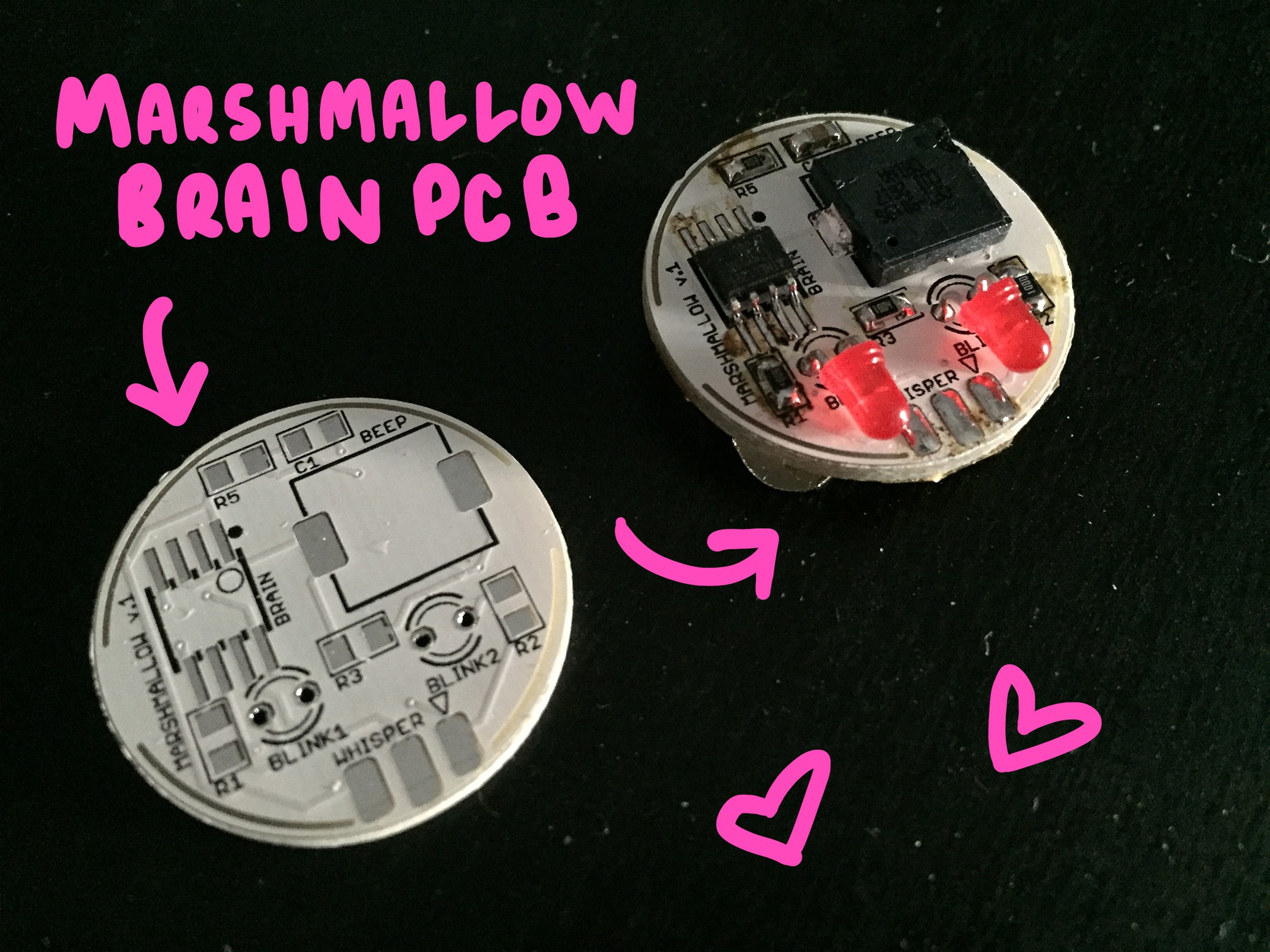
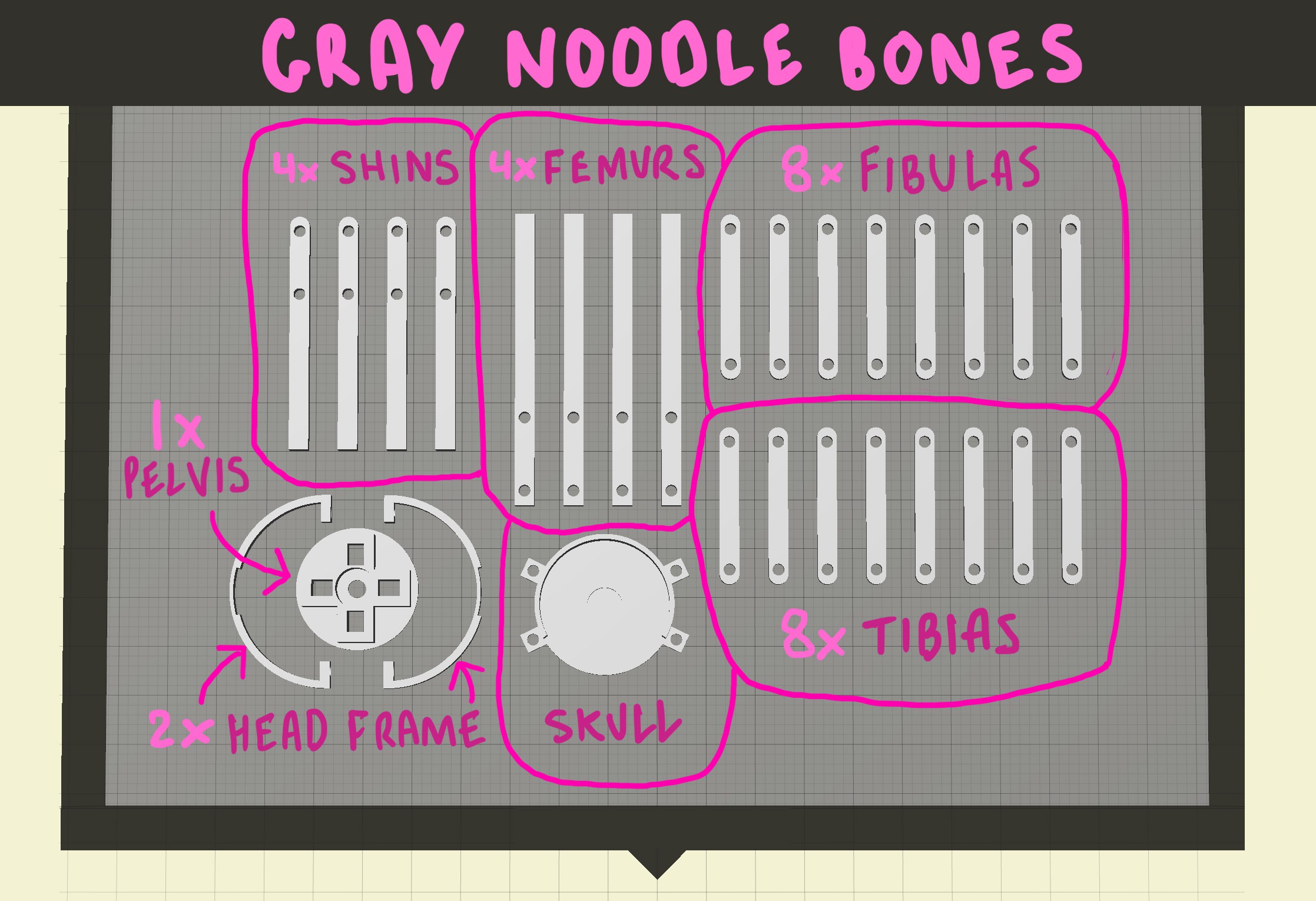
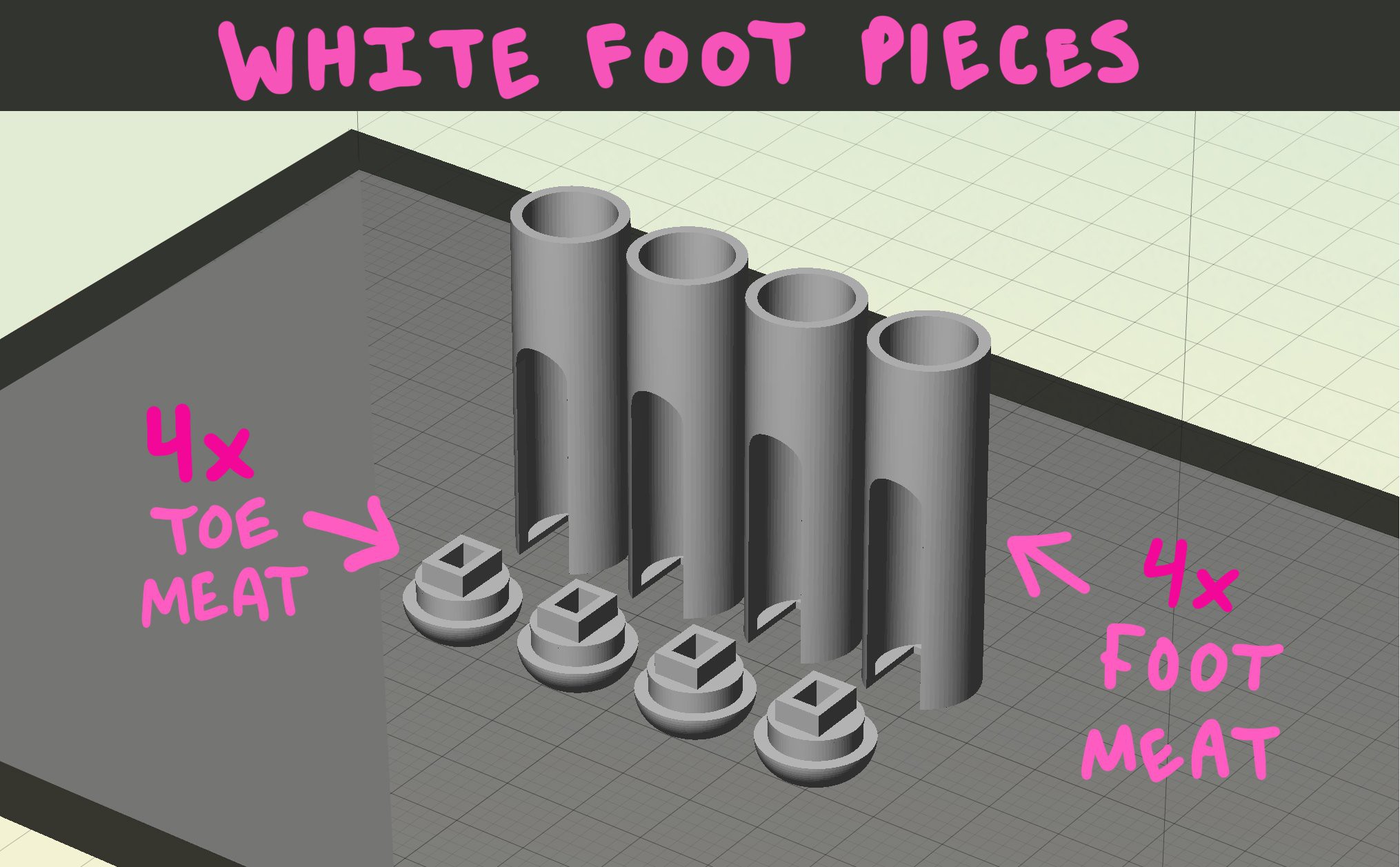
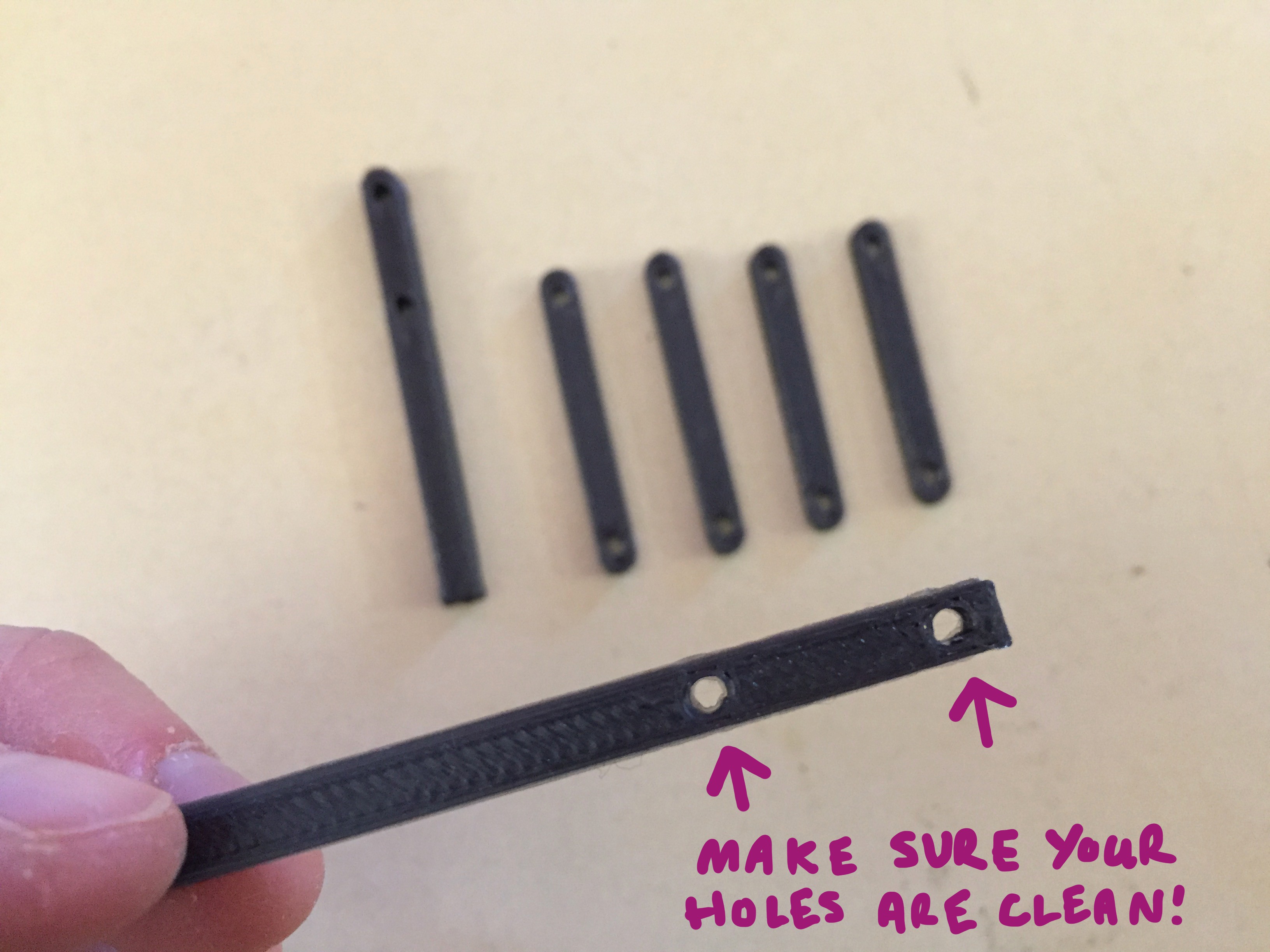
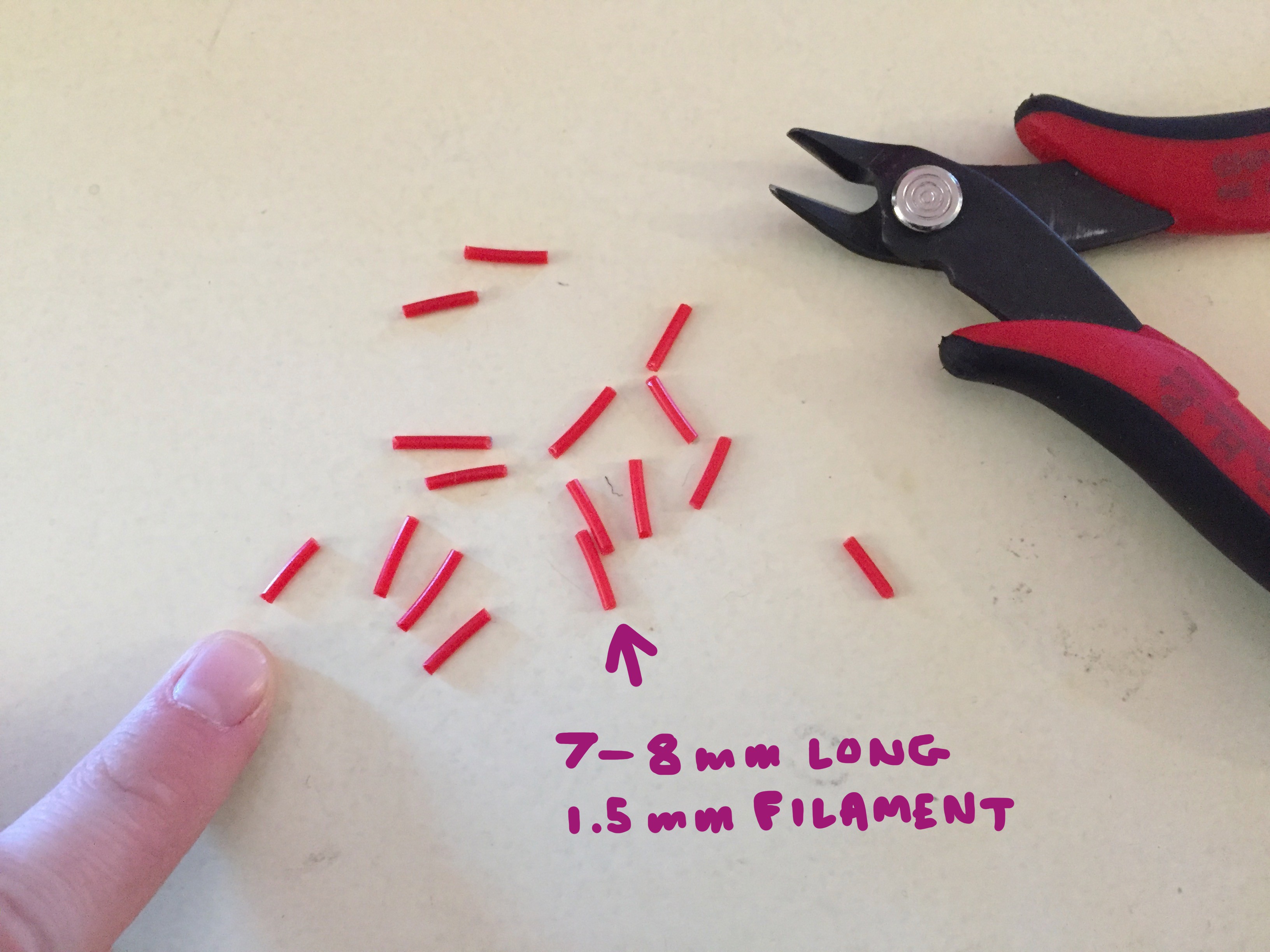

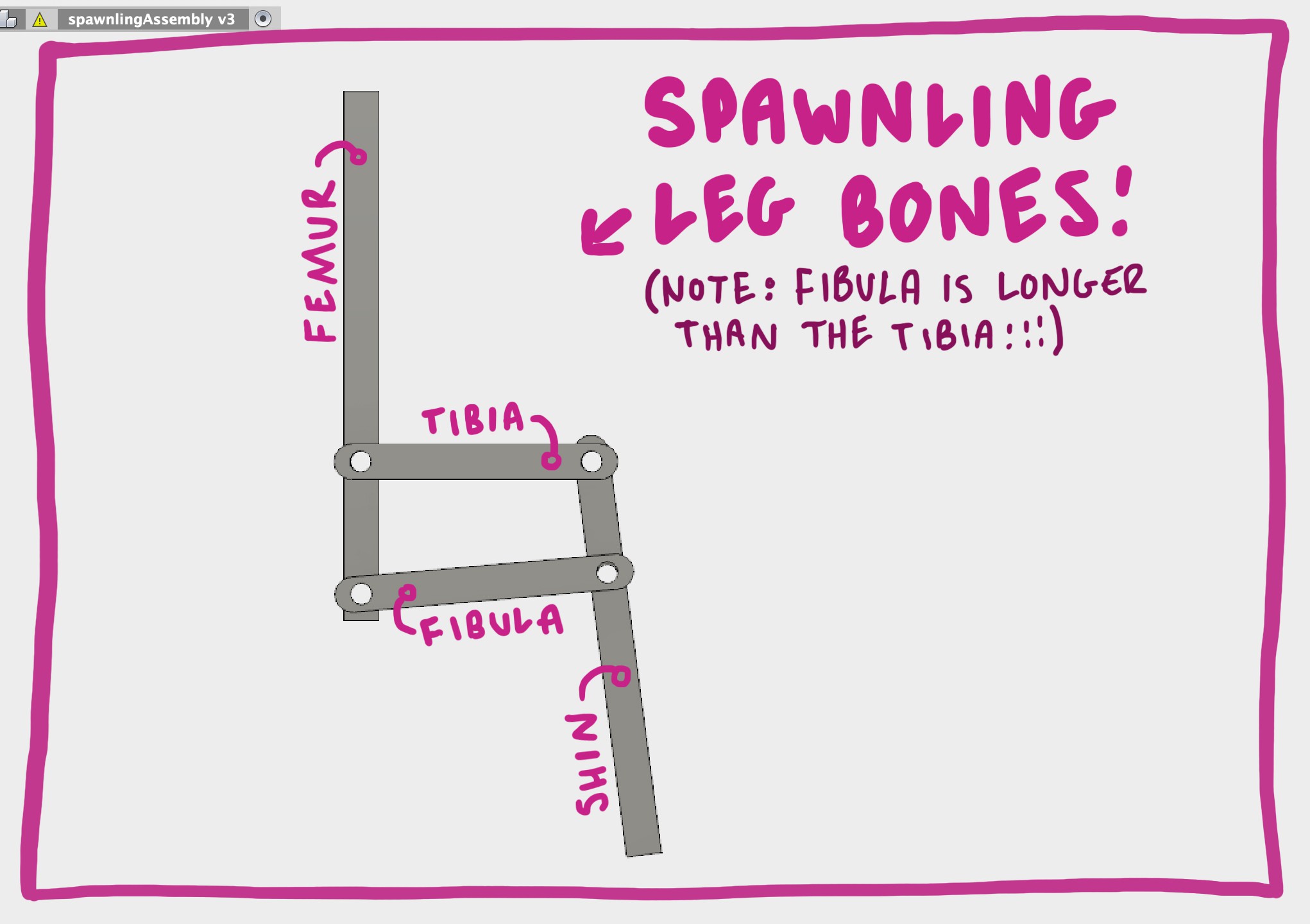
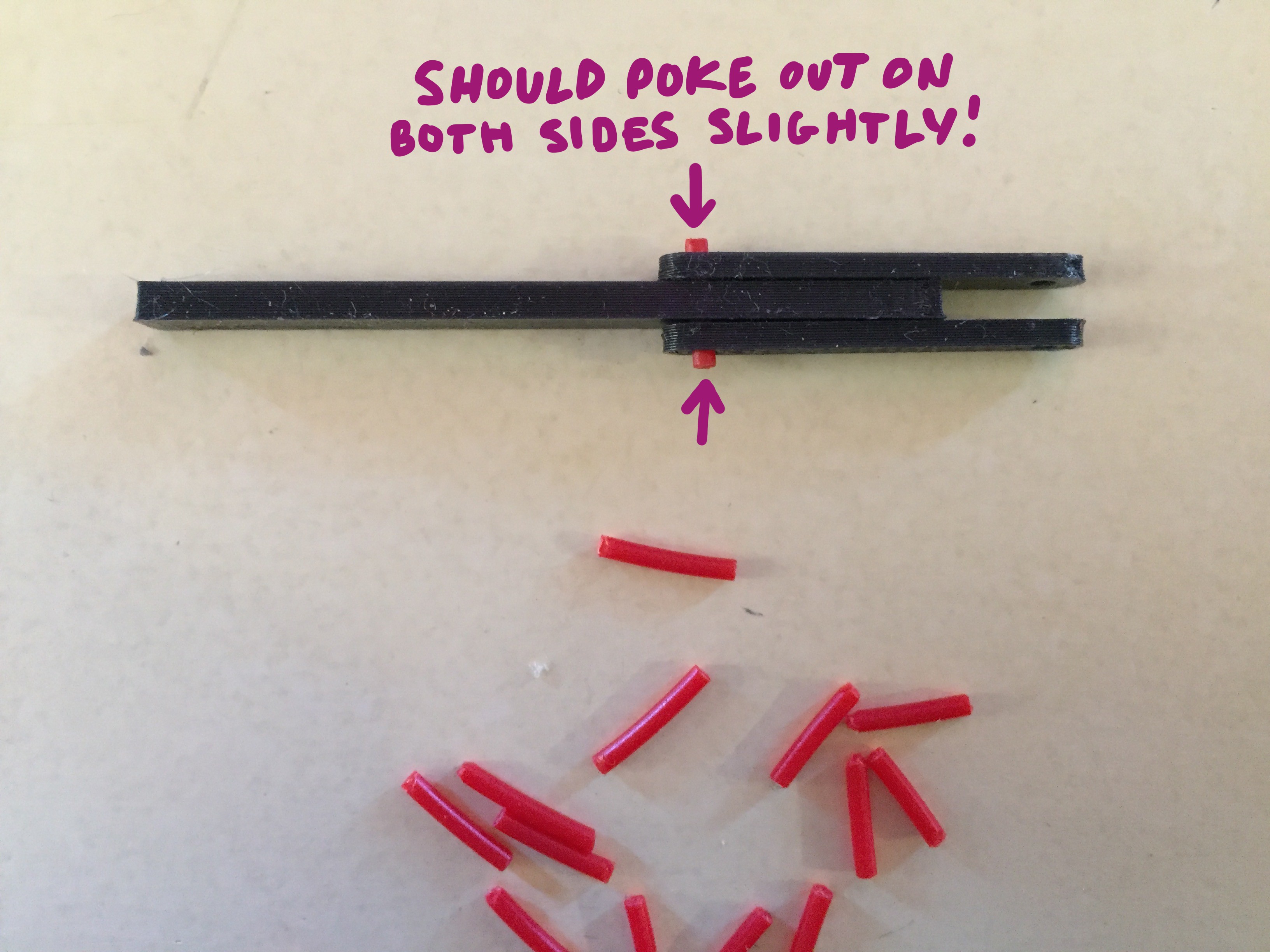
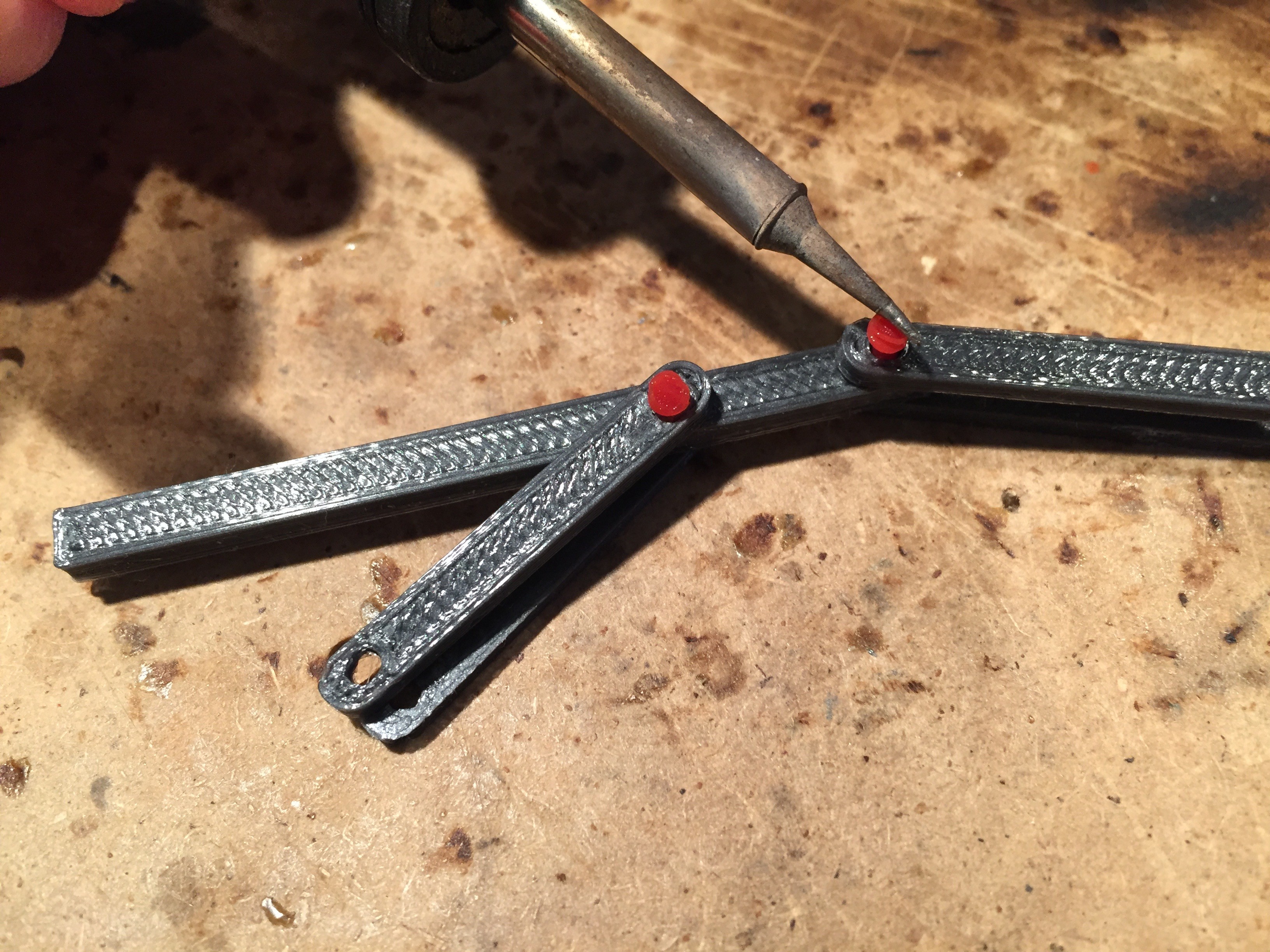

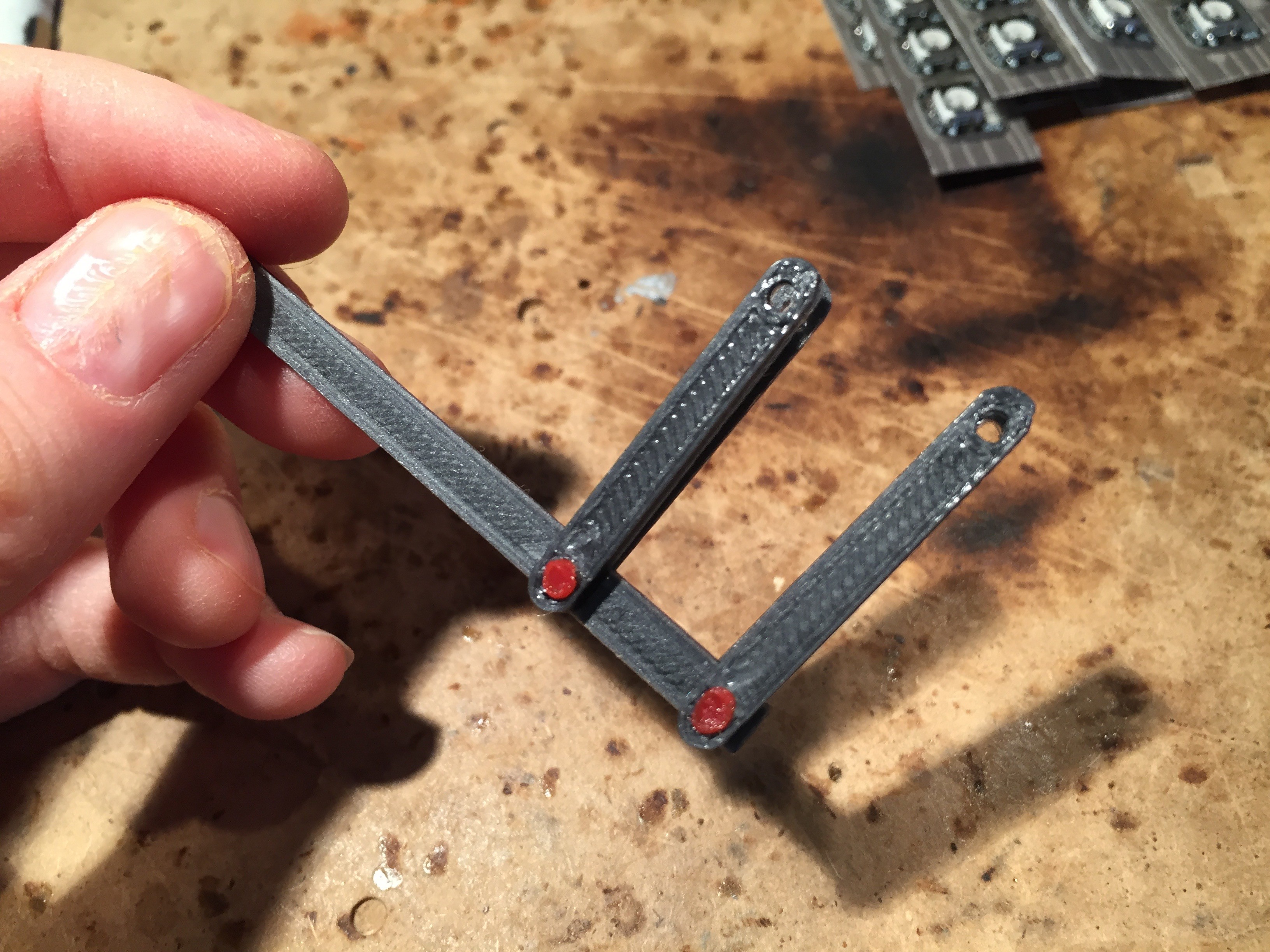

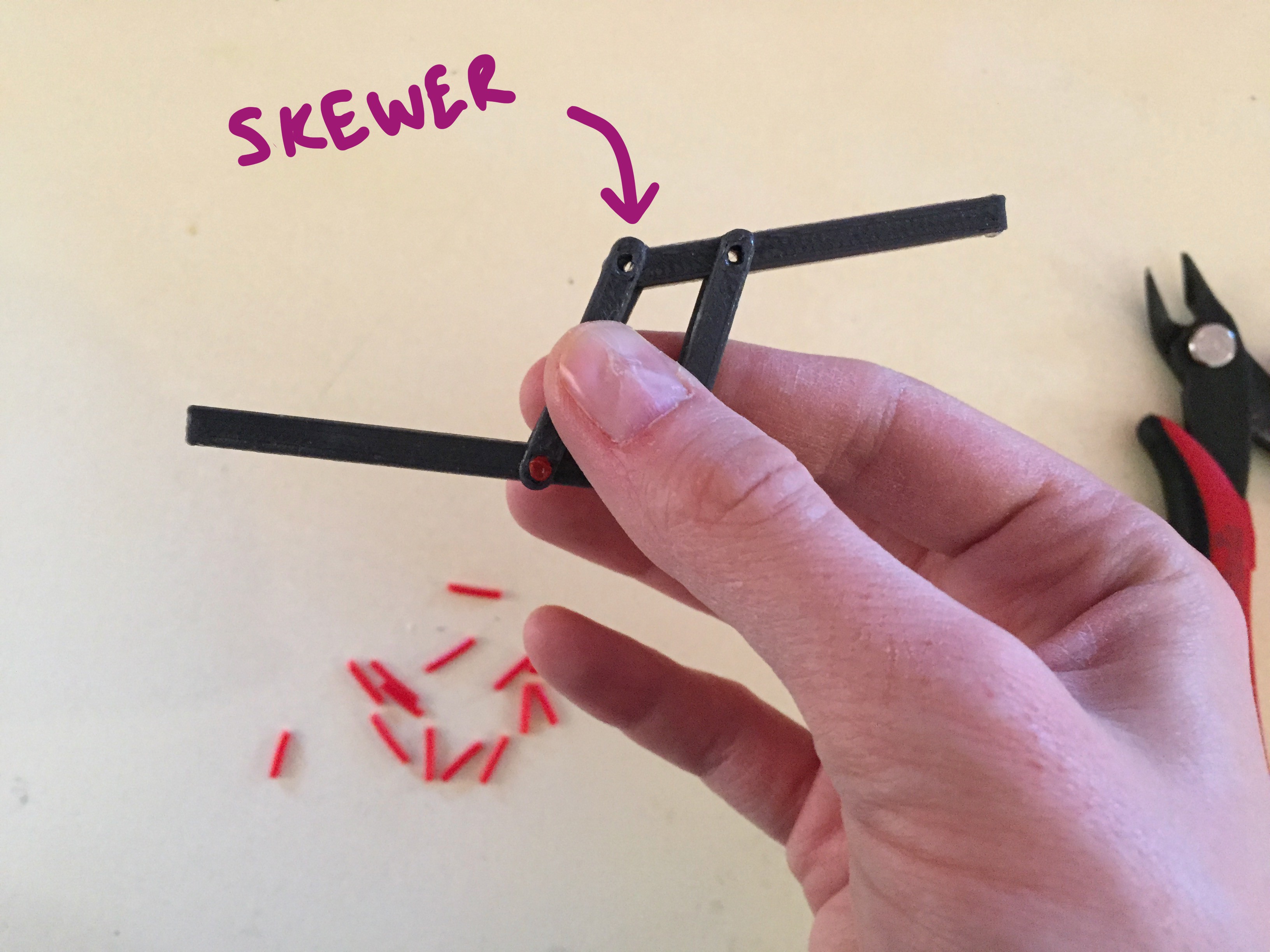
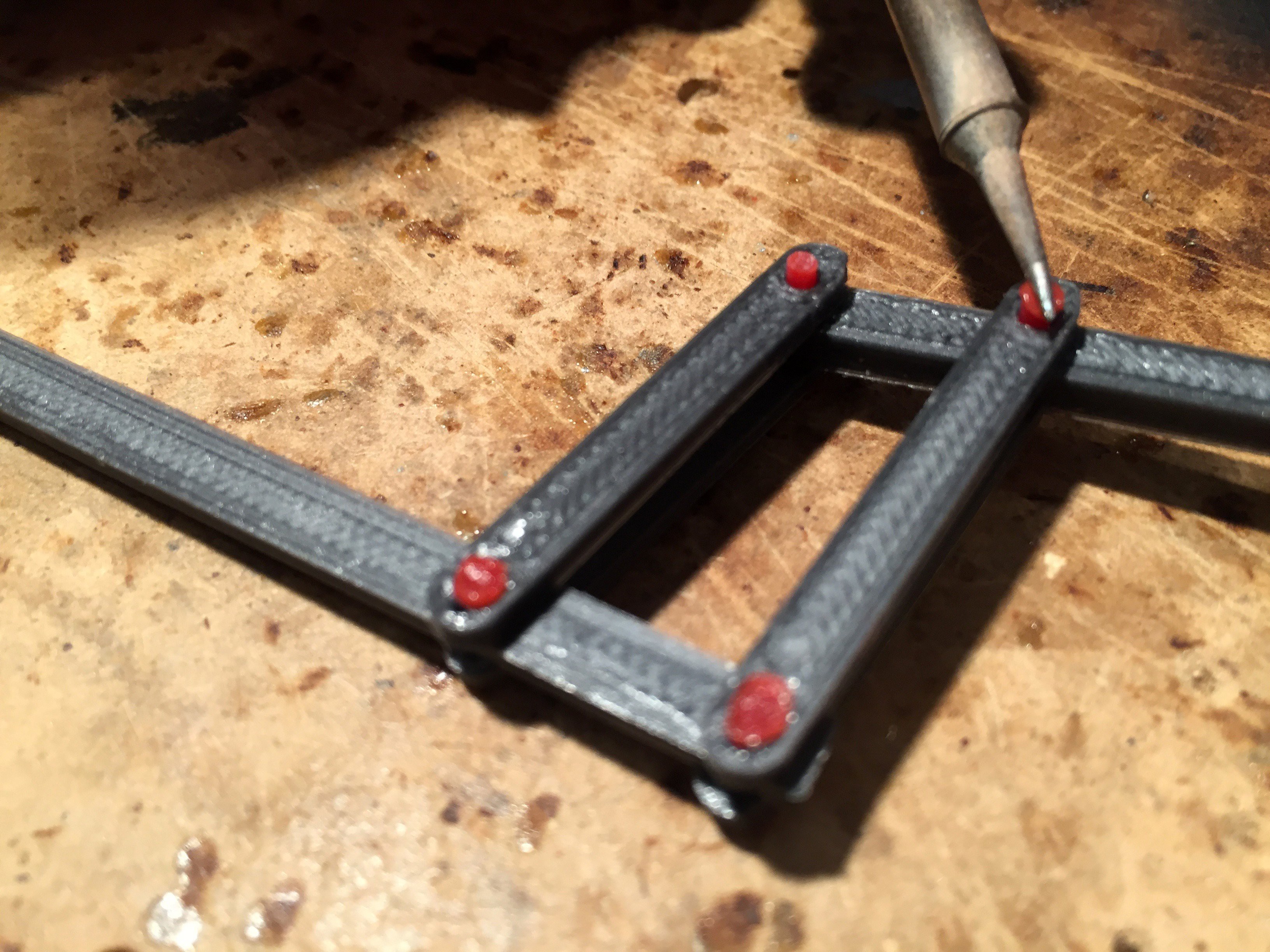
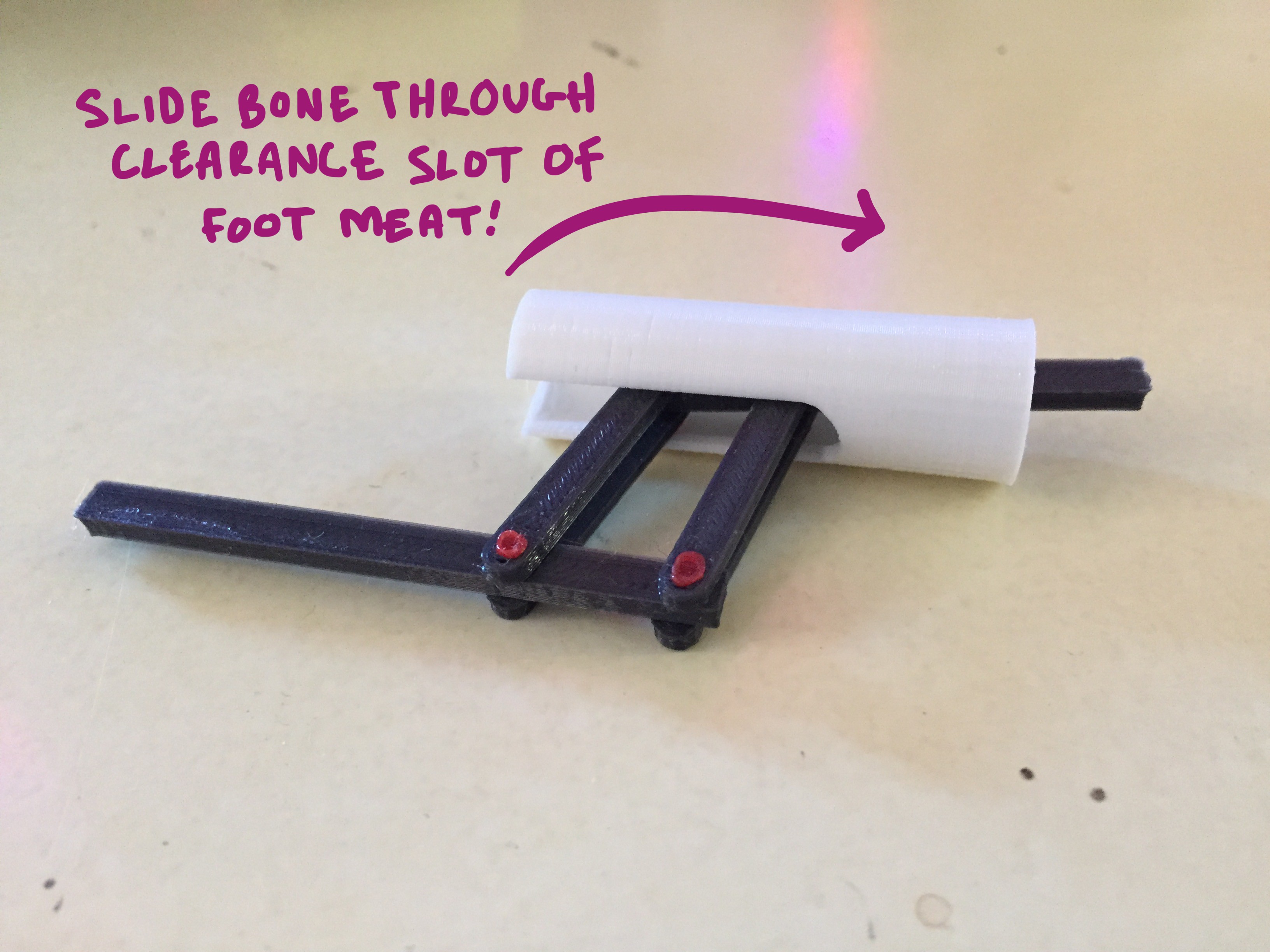
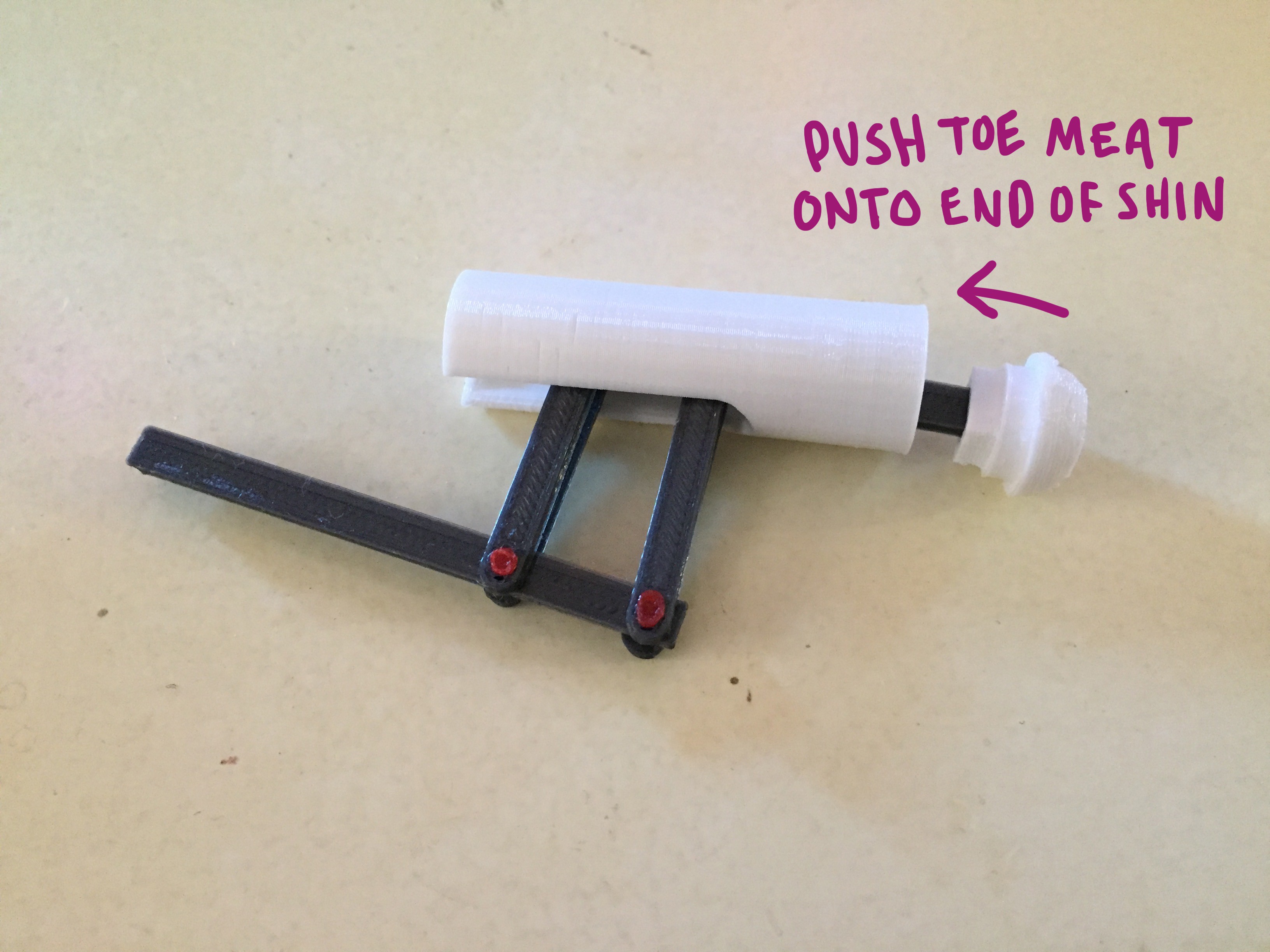
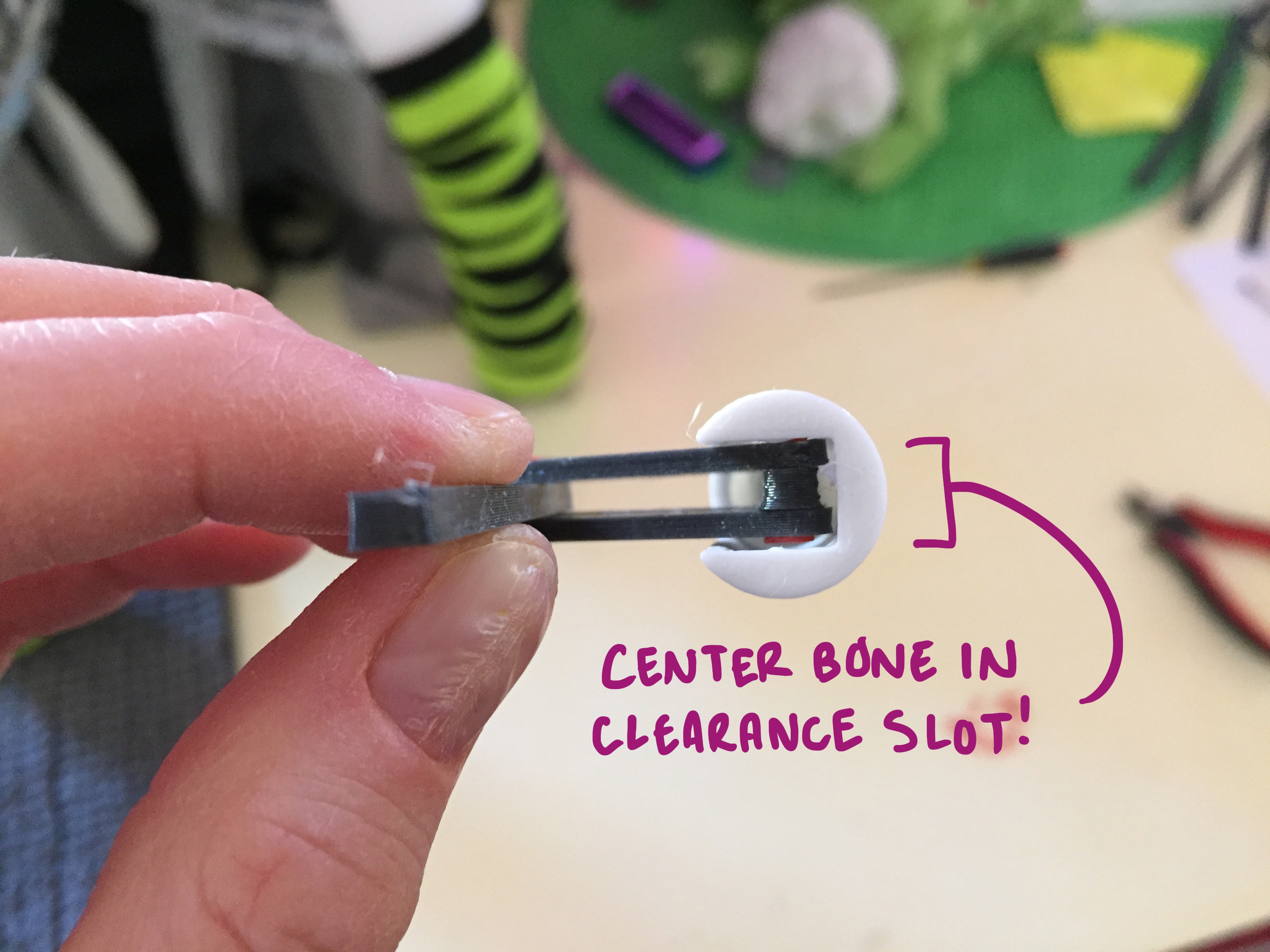
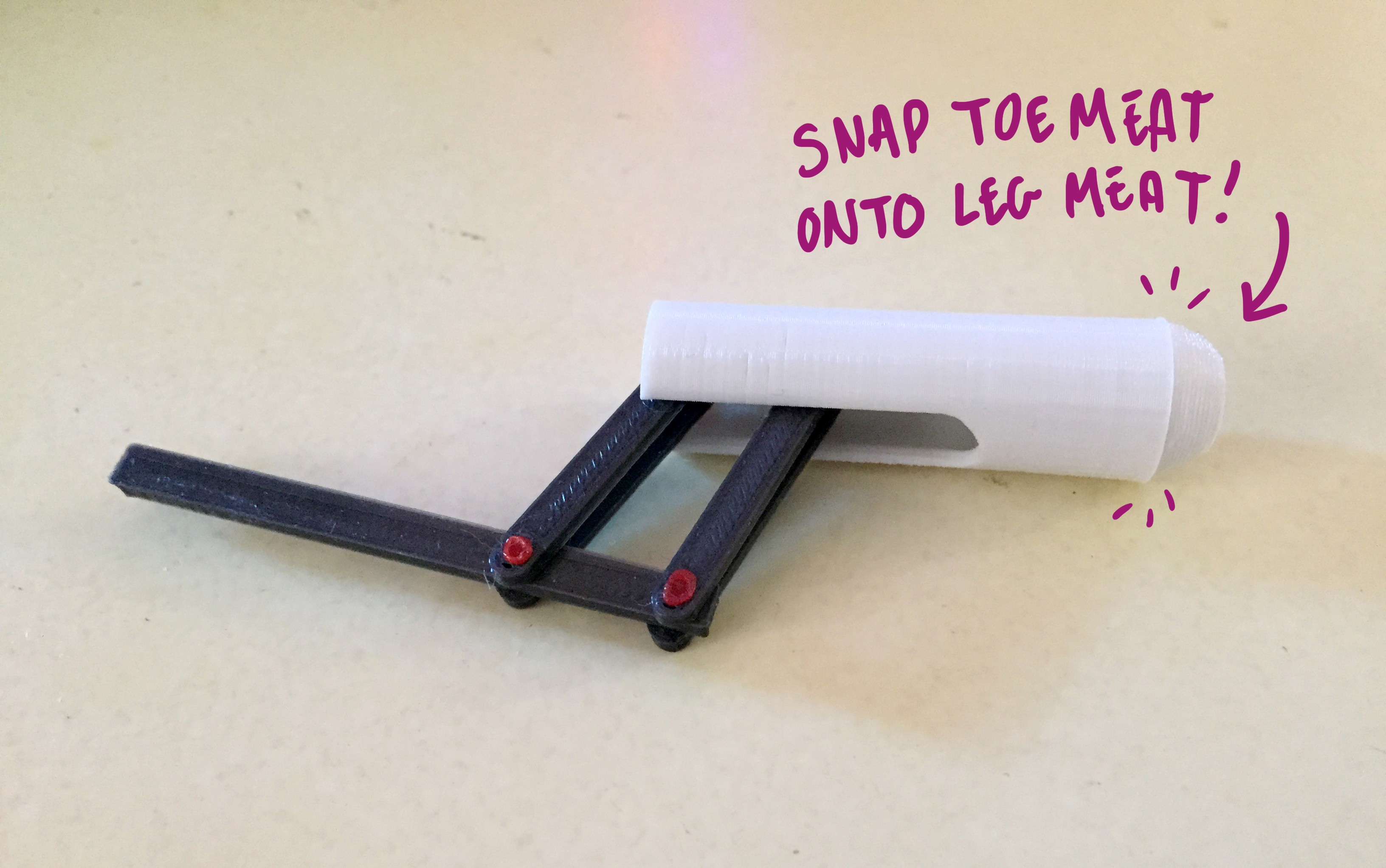
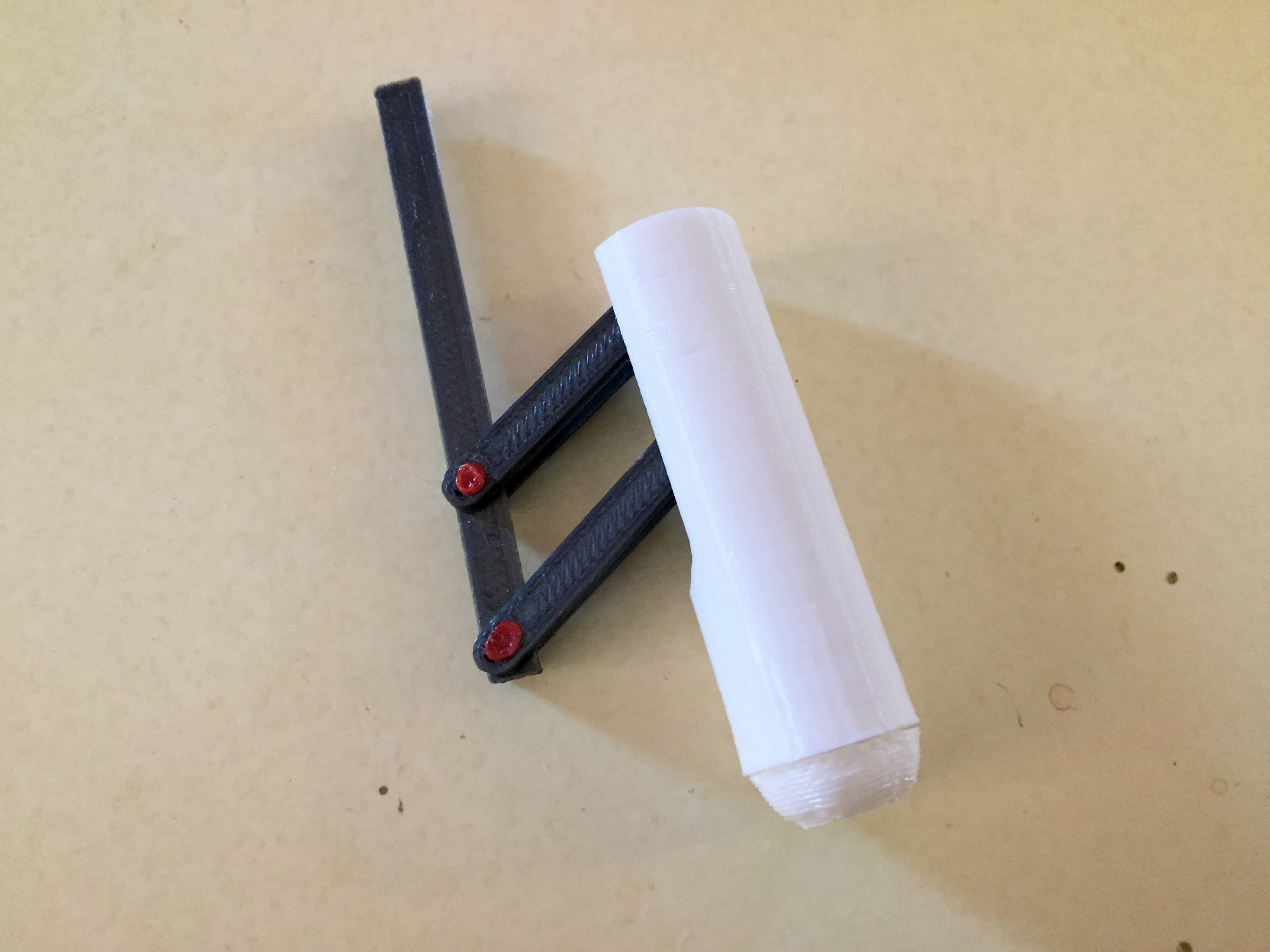
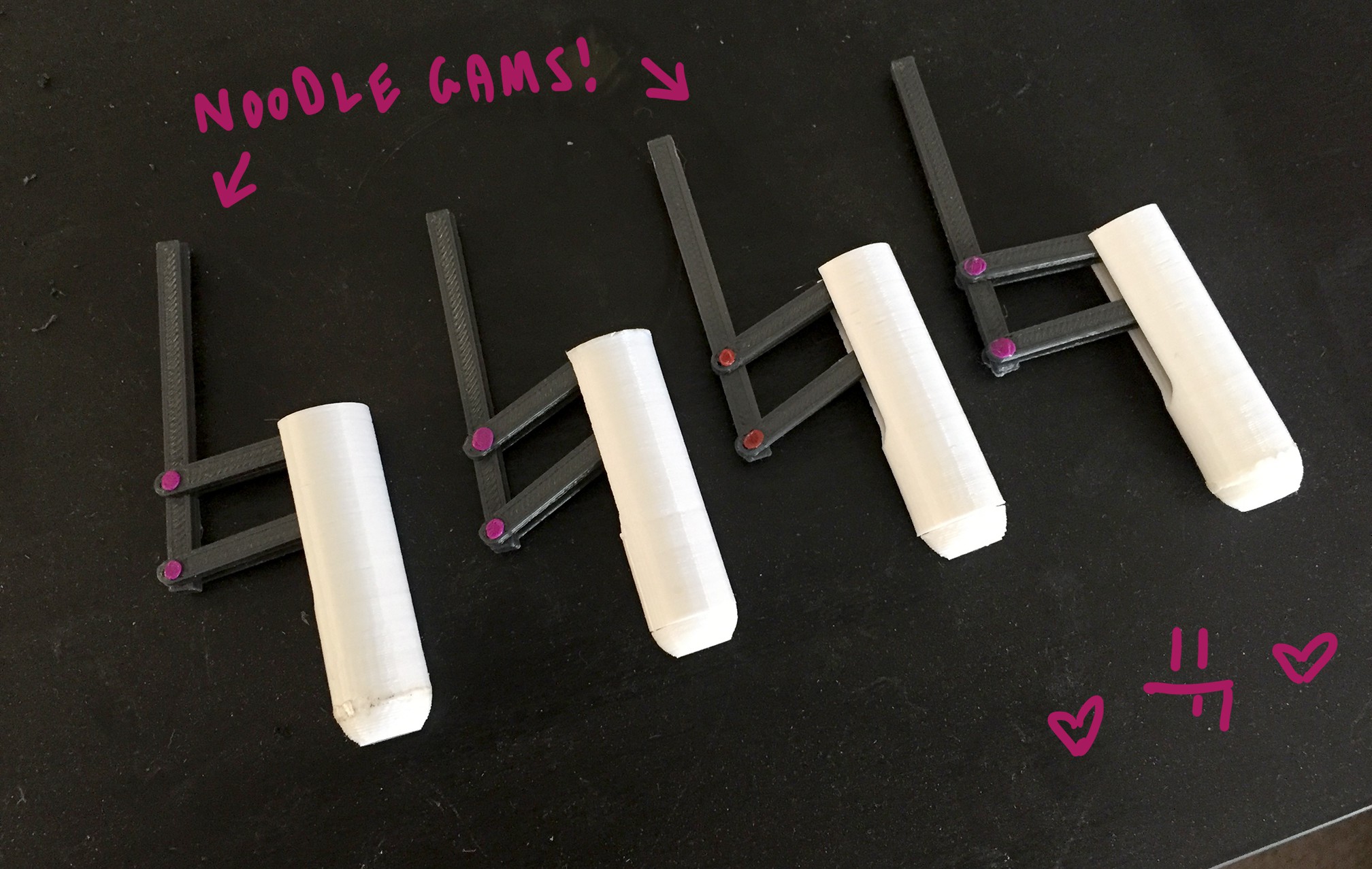
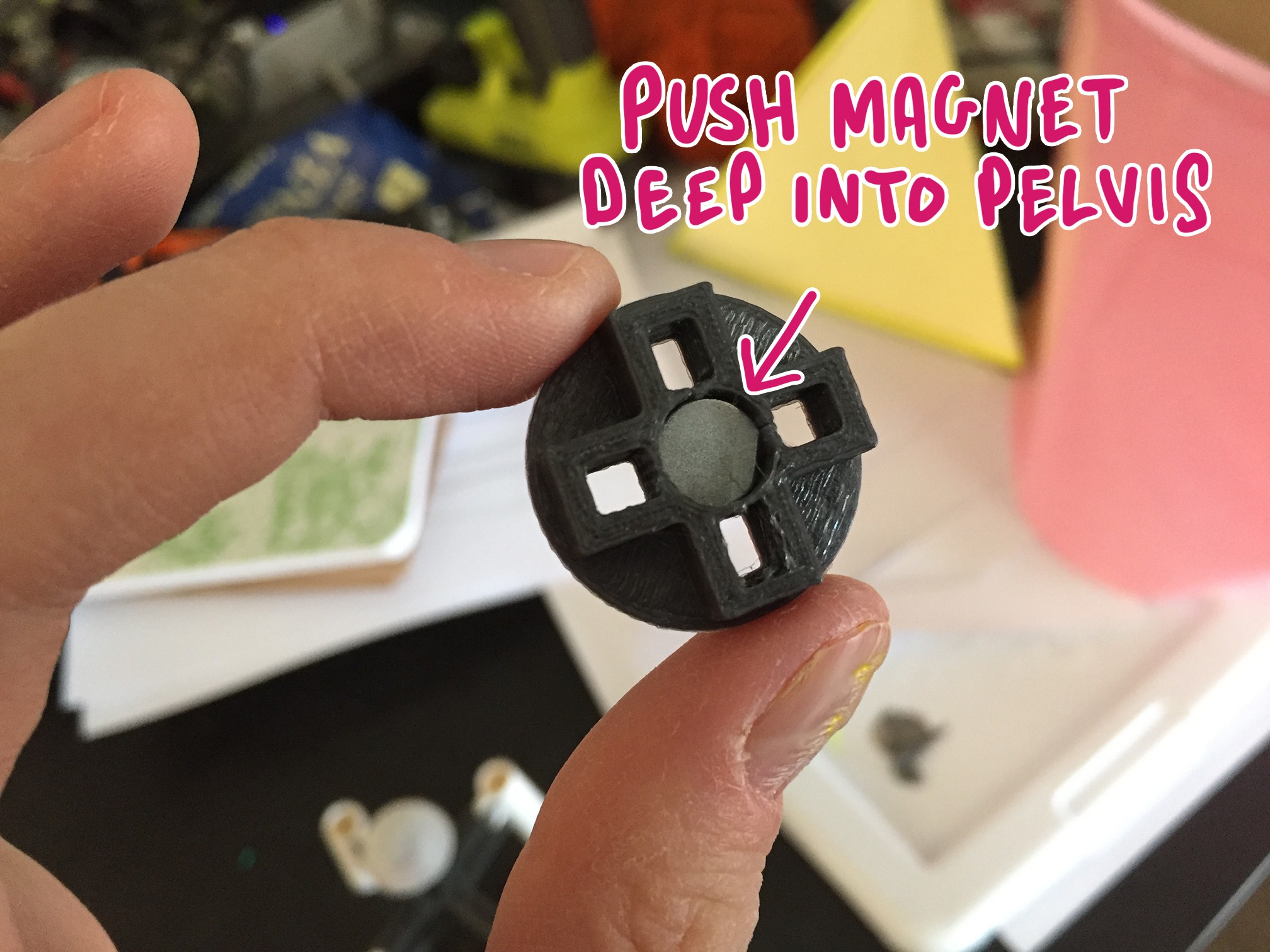
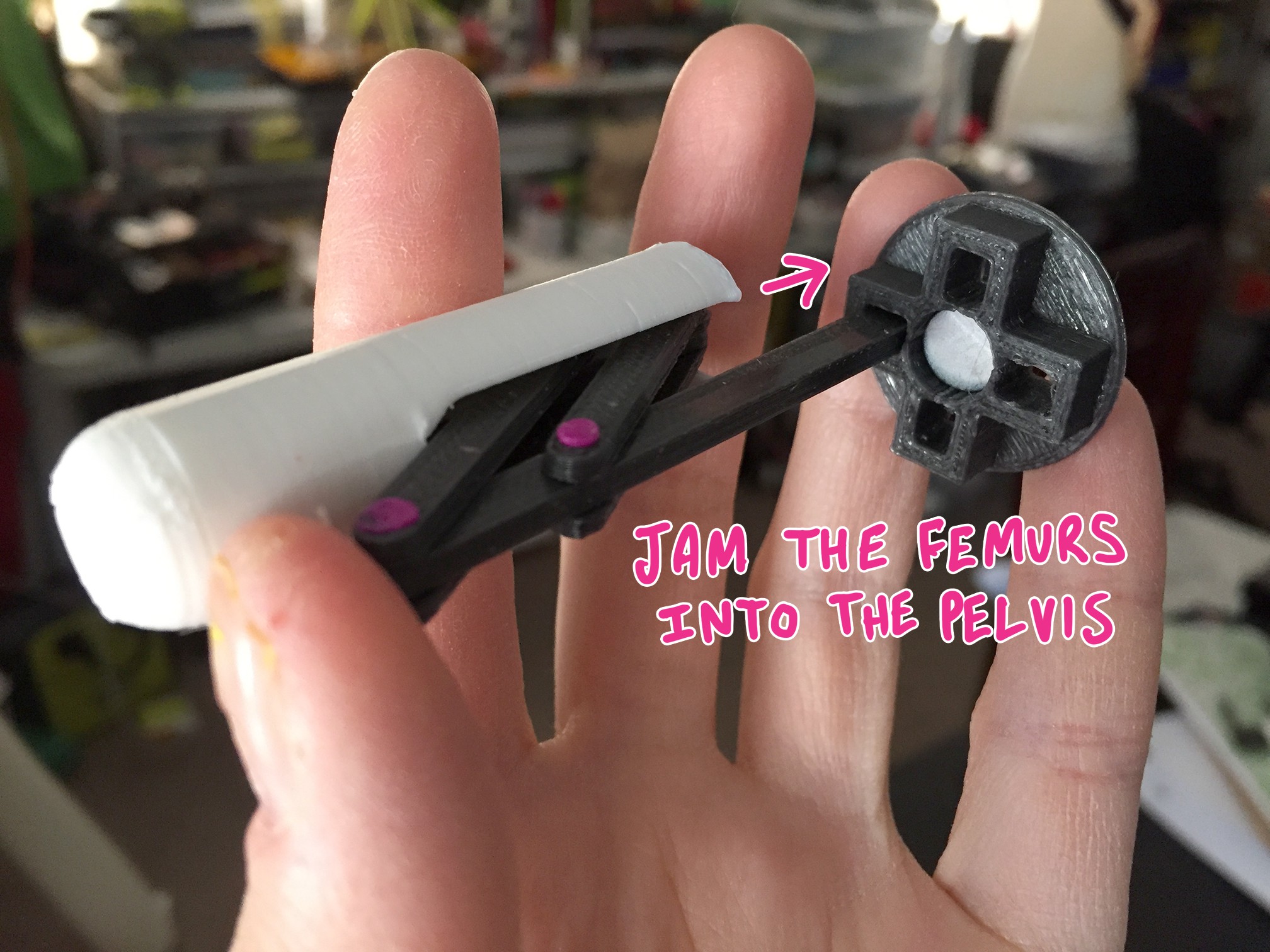
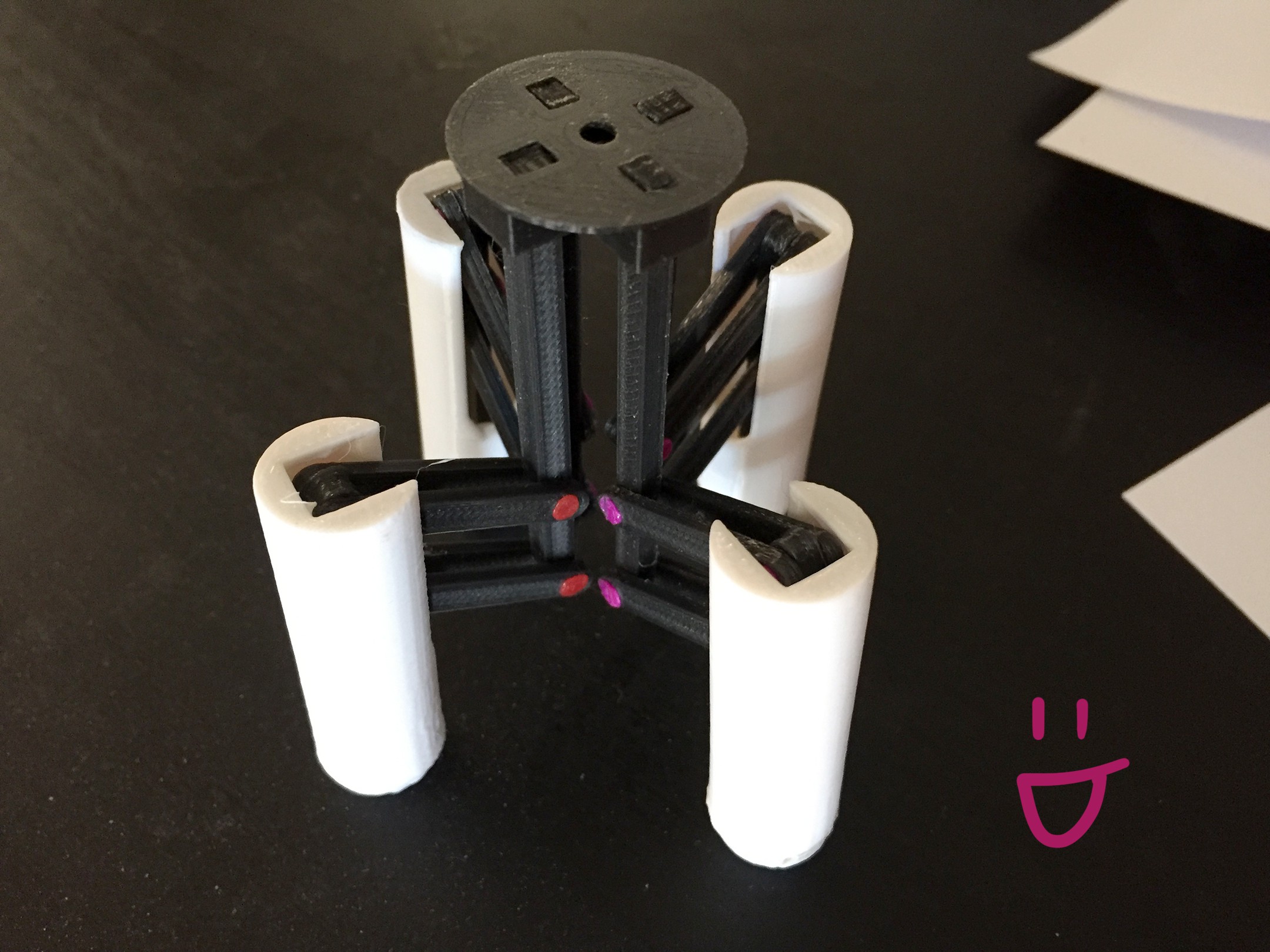


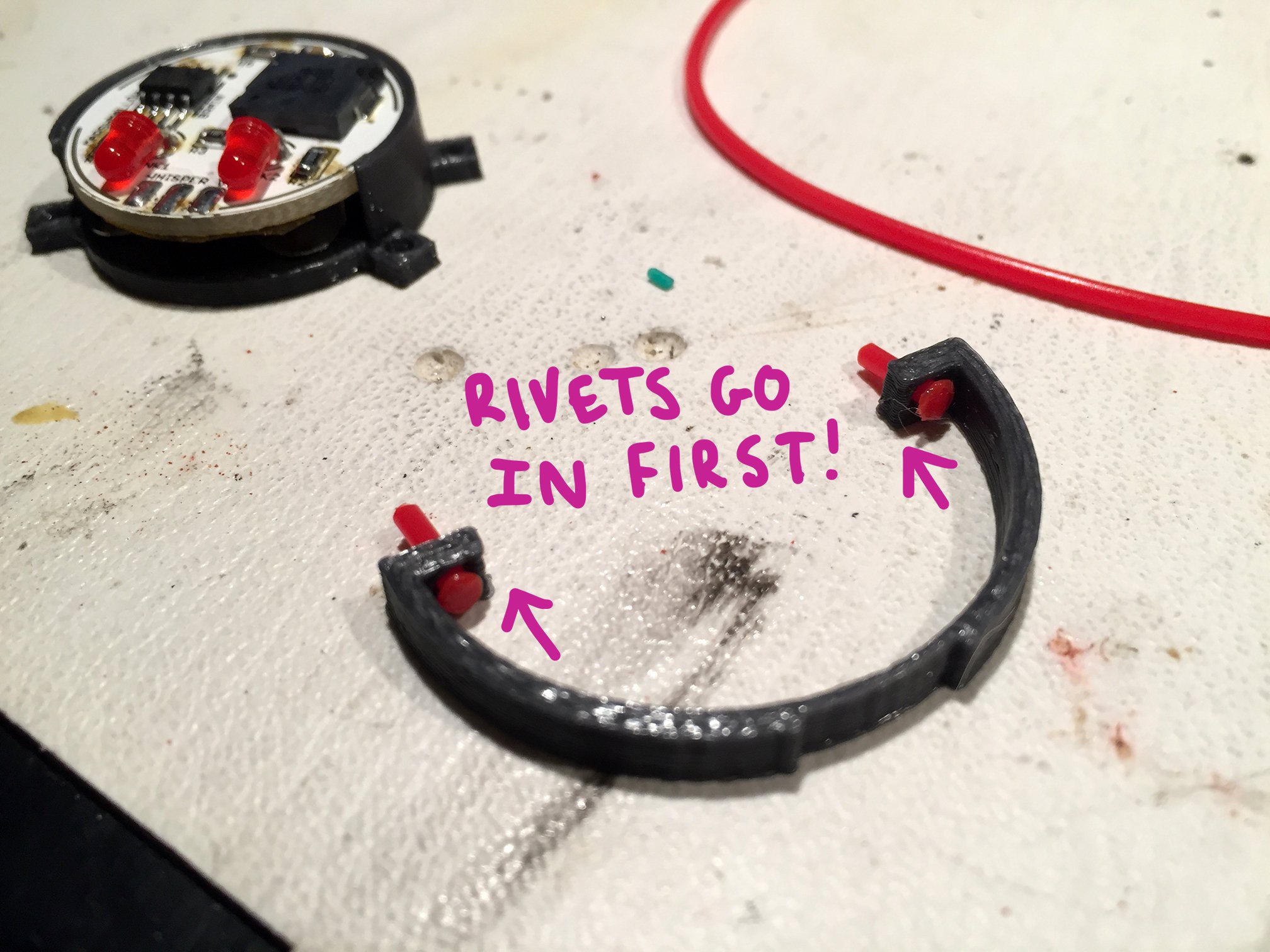
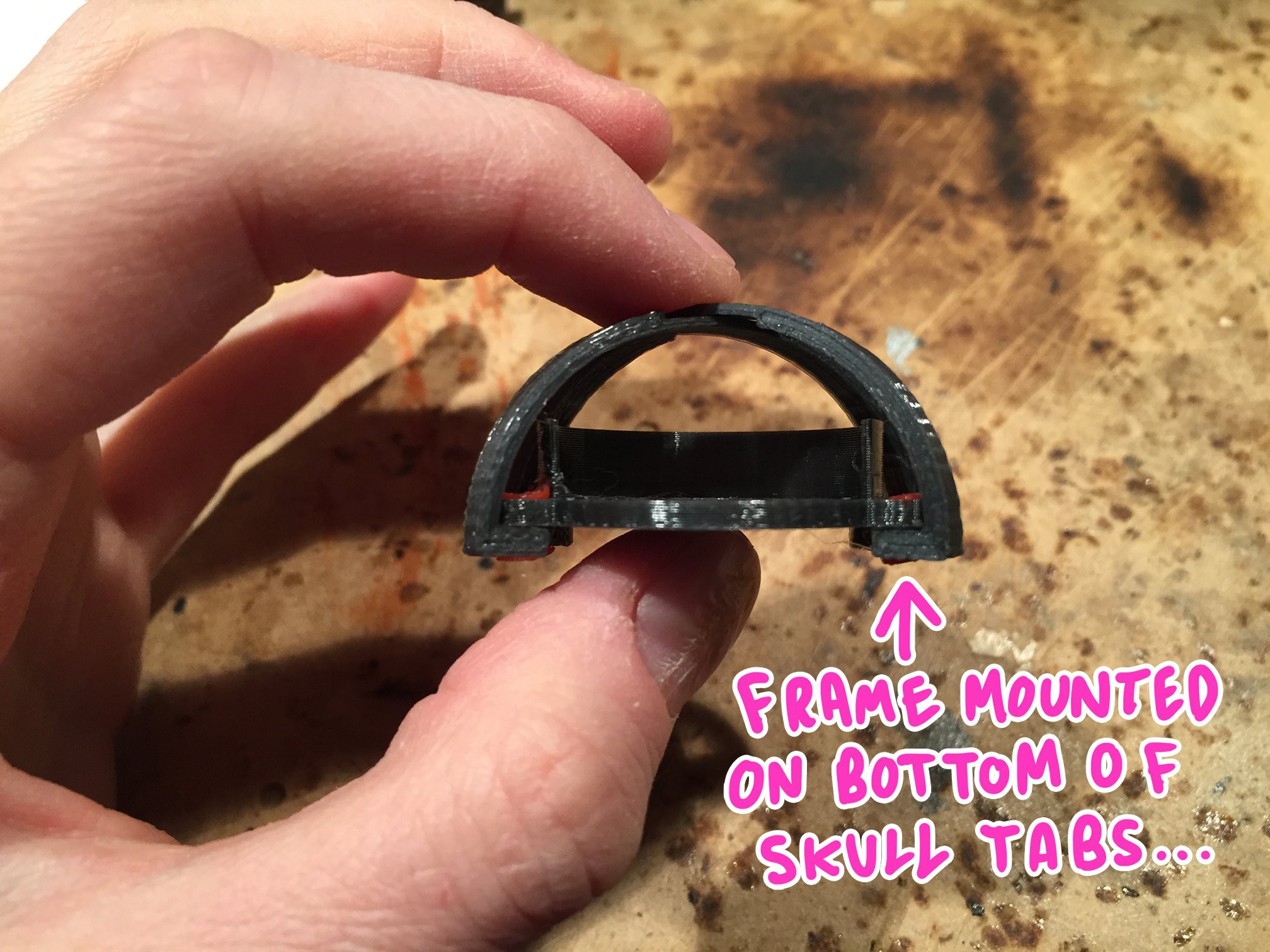
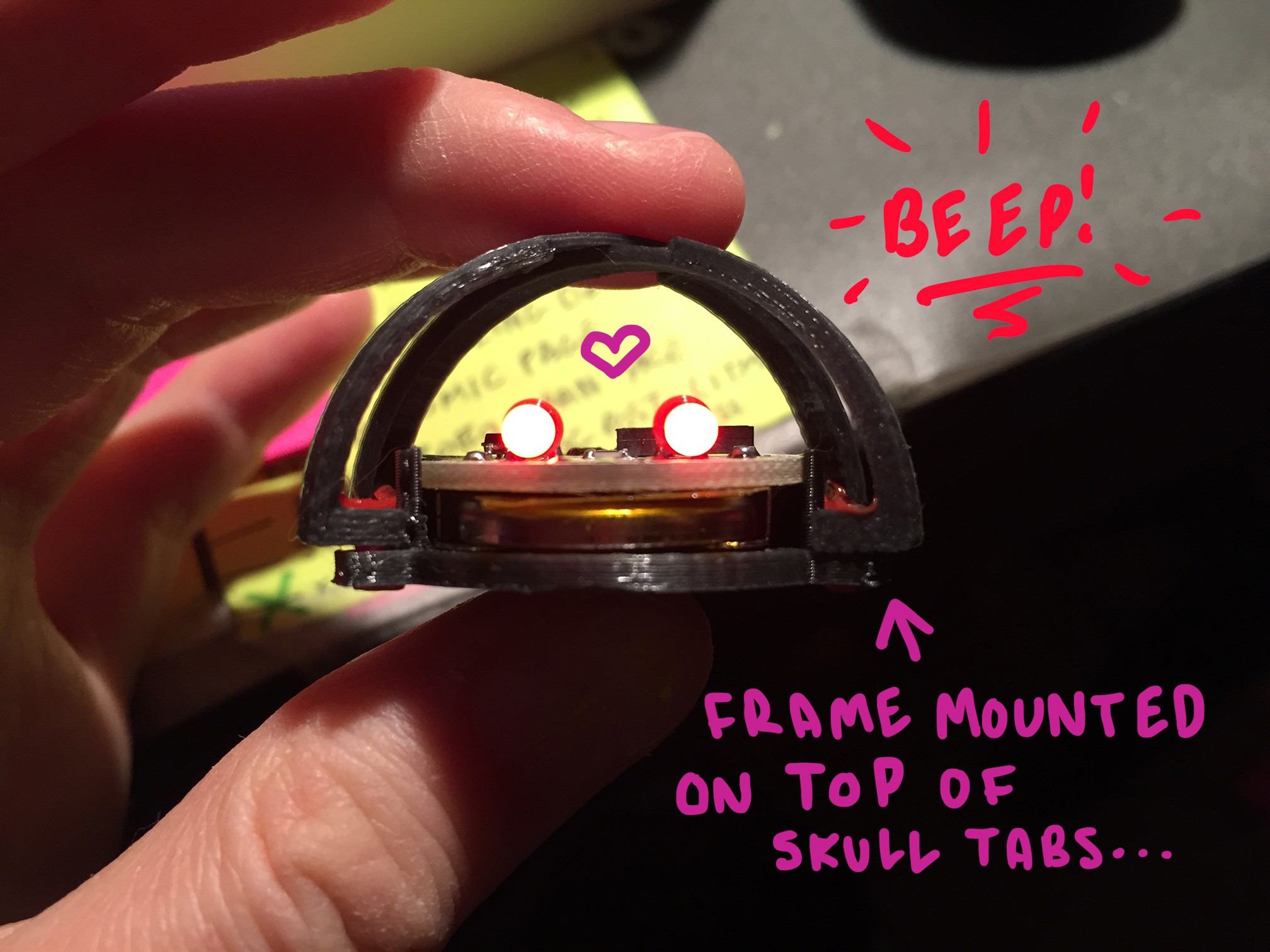
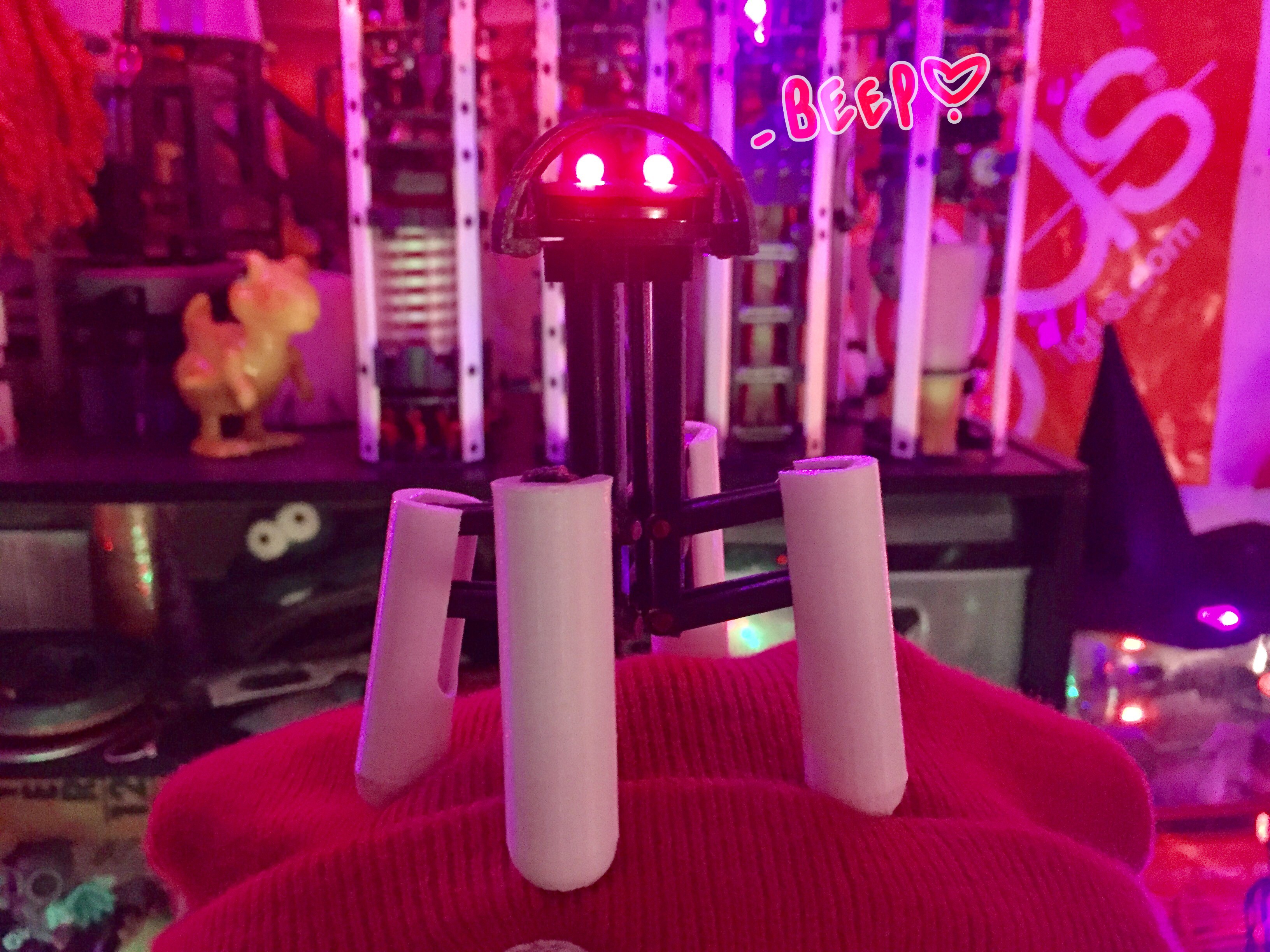
Discussions
Become a Hackaday.io Member
Create an account to leave a comment. Already have an account? Log In.